Revision Notes: The President and the Vice-President | History and Civics Class 10 ICSE PDF Download
| Table of contents |

|
| The President and the Vice PresidentThe President |

|
| Executive Powers of the President |

|
| Types of Emergency |

|
| The Vice President |

|
The President and the Vice President
The President
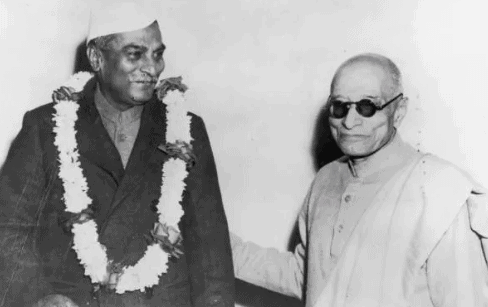
The President serves as the head of the Indian Union and holds the position of supreme commander of India's defence forces.
Qualifications for Election to the Position of President
- The candidate must be a citizen of India.
- The candidate must be at least thirty-five years old.
- The candidate must be qualified to be elected as a member of the Lok Sabha.
- The candidate must not hold any office of profit under the Government of India.
Election of the President
The President is elected indirectly by the members of the Electoral College, which consists of:
- The elected members of the Lok Sabha and the Rajya Sabha
- The elected members of the State Legislative Assemblies
It is important to note that the nominated members of the Parliament and the State Legislative Assemblies are not part of the Electoral College.
To propose a presidential candidate, the name must be supported by 50 members of the Electoral College and agreed upon by another 50 members.
Manner of Election
The President of India is elected through a system known as proportional representation by means of the single transferable vote. This method aims to ensure a fair and uniform scale of representation for different states.
a. Voting Power of Legislative Assembly Members : The voting power of an elected member of a state's Legislative Assembly (MLA) is calculated based on the state's total population and the number of elected members in the Assembly. This means that states with larger populations have more influence in the election.
b. Voting Value for Parliament Members : The value of the vote for members of Parliament (MPs) is determined by dividing the total votes assigned to a state’s MLAs by the total number of Parliament members. This ensures that the votes of Parliament members are proportionate to those of state MLAs.
Single Transferable Vote System
In the single transferable vote system, all candidates are listed, and voters indicate their preferences for these candidates. For instance, a voter might prefer candidate A first and candidate B second.
Election Process:
- If a candidate receives an absolute majority of votes, they are declared elected.
- If no candidate obtains a majority, the candidate with the fewest votes is eliminated.
- This elimination process continues until a candidate achieves an absolute majority.
Indirect Election of the President
The President of India is elected indirectly to maintain a balance of power and ensure representation of all states. Here are the reasons for this method of election:
- Avoiding Rivalry: Direct election by the people could create a situation where the President becomes a rival to the Council of Ministers, disrupting the balance of power.
- Preventing Partisan Bias: If the President were elected only by Parliament members, they would likely be a nominee of the ruling party, undermining their role as a representative of all states.
- National Representation: Electing the President through an Electoral College that includes State Legislative Assemblies ensures that the President represents the entire nation, not just a specific party or region.
Oath of Office: The President takes the oath of office in the presence of the Chief Justice of India, signifying the importance of the role and the commitment to uphold the Constitution.
Term of Office
- The President is elected for a term of five years.
- However, they can continue to hold office after their term expires until a new President is elected.
Vacation of Office
- Resignation: The President can resign by submitting a letter of resignation to the Vice President.
- Impeachment: The President can be impeached for gross misconduct or violating the Constitution.
Procedure for Impeachment
- A resolution for impeachment can be moved with a fourteen-day notice and must be signed by at least one-fourth of the House members.
- The resolution must be passed by a two-thirds majority of the House.
- The charge is then investigated by either House of Parliament, and the President has the right to appear and be represented during the investigation.
- If both Houses pass a resolution by a two-thirds majority, the President is impeached.
Executive Powers of the President
- The President of India is the head of the Indian Union. All executive orders are issued in the name of the President by the Prime Minister and their cabinet.
- Key appointments are made in the President's name on the advice of the Prime Minister and the cabinet.
The President appoints:
- The Prime Minister (the leader of the majority party in the Lok Sabha) and their Council of Ministers.
- The Chief Justice and the judges of the Supreme Court and High Courts.
- The Governors of states, Lieutenant Governors, and Chief Commissioners of Union Territories.
- The Attorney General, the Comptroller and Auditor General of India.
- The Chairman and members of the Union Public Service Commission.
- President’s Rule can be imposed in states if there is a breakdown of state machinery or if no party can prove a majority in the House.
- The President is also responsible for the administration of Union Territories and border areas.
Diplomatic Powers of the President
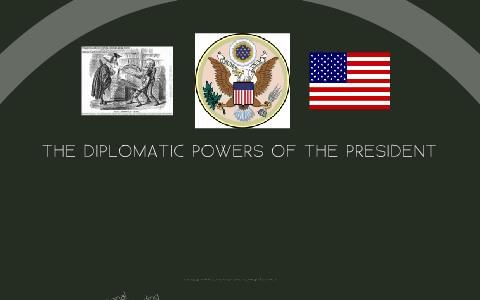
- Appointment of Ambassadors: The President of India has the authority to appoint Indian ambassadors to other countries.
- Receiving Foreign Ambassadors: The President receives ambassadors and diplomatic envoys from other countries.
- Conclusion of Treaties: All treaties and international agreements are concluded in the name of the President.
- Representation at International Conferences: The President represents the entire nation at international conferences.
Legislative Powers of the President
- Addressing Parliament: The President addresses both Houses of Parliament during the first session after the General Elections to the Lok Sabha.
- Sending Messages: The President can send messages to both Houses of Parliament regarding any parliamentary matter, such as bills.
- Summoning and Proroguing Parliament: The President has the authority to summon and prorogue the Houses of Parliament.
- Dissolving the Lok Sabha: The President can dissolve the Lok Sabha based on the recommendations of the Prime Minister.
- Nominating Members to the Rajya Sabha: The President nominates 12 members to the Rajya Sabha from among individuals who have made significant contributions to science, literature, social sciences, arts, and sports.
- Assent to Bills: No bill can become law without the President's signature. The President can return a bill to the House if there are disagreements, but must sign it if it is sent back a second time.
- Promulgating Ordinances: The President can promulgate an Ordinance, which has the same status as an Act of Parliament. This can be done when immediate action is necessary, even if no House of Parliament is in session.
- Lapsing of Ordinances: An Ordinance lapses if disapproved by Parliament, after six weeks, or when replaced by an Act of Parliament.
- Bills Reserved for Presidential Opinion: The Governor may reserve certain bills passed by the state for the President's opinion. The President can send the bill back to the State Assembly for reconsideration.
- Introduction of Certain Bills: A bill related to altering a state’s boundaries or forming new states cannot be introduced without the President's recommendations.
Financial Powers of the President

- Money Bills: These can only be introduced in the Lok Sabha with the President's recommendation.
- Annual Budget: The Finance Minister presents the budget to Parliament on behalf of the President.
- Annual Financial Statement: This is also submitted to Parliament at the start of the financial year, representing the President.
- Contingency Fund Withdrawals: Withdrawals from this fund require the President's approval.
Military Powers
- The President serves as the supreme commander of India's armed forces.
- Appointments of the Chiefs of the three military branches are made by the President based on recommendations from the Prime Minister, the Council of Ministers, Parliament, and the Military Secretary.
Judicial Powers
- The President is not accountable to any court for actions taken while in office and cannot be prosecuted for criminal offenses during their term.
- The President has the authority to grant pardons, reprieves, respites, or commute sentences for individuals convicted of crimes.
Discretionary Powers
- The President can appoint the Prime Minister in situations of a hung Parliament where no party has a clear majority.
- The President can also appoint the Prime Minister if the current one dies unexpectedly and the ruling party cannot quickly choose a successor.
- If the ruling party loses its majority in the Lok Sabha, the President has the discretion to dissolve the House or ask another party leader to prove their majority.
- The President has the power to dismiss government ministers who lose the confidence of the House but refuse to resign.
Emergency Powers
The President of India has the authority to declare an emergency under three specific circumstances:
- National Emergency: This can be declared when there is a threat to the security and integrity of the nation due to foreign aggression, civil war, or armed rebellion.
- Breakdown of Constitutional Machinery: An emergency can be proclaimed in a state if the constitutional machinery there has collapsed.
- Financial Emergency: This applies when the financial stability or creditworthiness of the country is at risk.
Types of Emergency
- National or General Emergency: A national emergency can be declared by the President if there is a perceived threat to the security of India from external aggression, internal civil unrest, or armed rebellion.
- Approval by Parliament: The declaration of a national emergency must be approved by both Houses of Parliament within one month, and this requires a special majority.
- Duration and Approval: Initially, the emergency cannot last for more than one month without parliamentary approval. If the Lok Sabha does not approve the proclamation, the President must revoke it.
Effects of National Emergency
- Suspension of Fundamental Rights: During a national emergency, the fundamental rights of individuals may be partially or wholly suspended. However, rights under Articles 20 (protection in respect of conviction for offenses) and 21 (protection of life and personal liberty) cannot be suspended.
- Central Government Authority: States are required to follow the instructions of the central government, and the country takes on a more unitary character.
- Revenue Distribution and Salaries: The central government can alter the distribution of revenues between itself and the states, and it can also reduce the salaries of parliamentarians.
- Extension of Lok Sabha Term: The term of the Lok Sabha may be extended by up to one year during an emergency.
- Historical Instances: The first national emergency was declared on October 26, 1962, in response to China’s attack on India. It was declared again on December 3, 1971, due to the threat posed by Pakistan’s military.
Emergency Caused by Breakdown of Constitutional Machinery
- The President can declare a Constitutional Emergency in a state if the Governor reports that the state government is unable to function according to the Constitution.
- In such cases, President's rule is imposed, initially for a duration of two months. If an extension is needed, it must be ratified by Parliament, and President's rule can last for up to a year.
Effects of Emergency in the State
- The President takes over the administration of the state, with the Governor following the Union Government's instructions.
- The President has the authority to dissolve the Lok Sabha and dismiss the Council of Ministers.
- Parliament can enact laws on subjects typically reserved for the State List.
- When the Lok Sabha is not in session, the President can authorize expenditures from the State's Consolidated Fund.
- The first instance of President's rule was in Punjab in 1951.
Financial Emergency
The President can declare a financial emergency if the nation's financial credibility or stability is at risk. This type of emergency is initially valid for two months but requires Parliamentary ratification for extension.
Effects of Financial Emergency in the State
- The President may appoint a Finance Commission to recommend measures for improving the country's financial condition.
- The President has the authority to reduce the salaries and allowances of government officers.
- All money bills passed by the Lok Sabha must be submitted to the President for approval.
- The President can issue directives to the States regarding the use of funds.
- Financial emergencies have never been declared in any state.
Position of the President
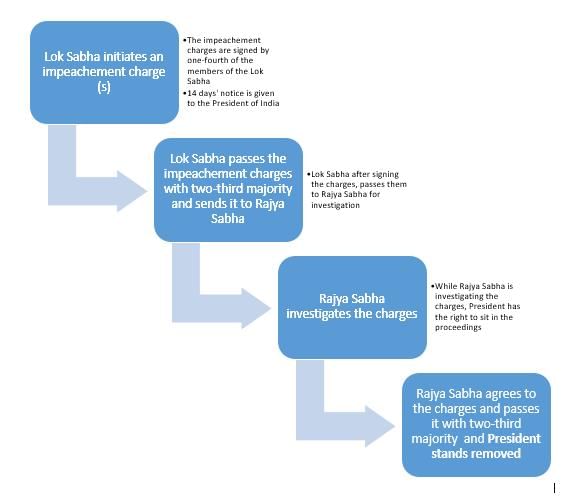
- The President is the head of the Indian Union, but he has to act on the advice of the Prime Minister and the Council of Ministers.
- The President may send advices of the Prime Minister and his Council of Ministers for reconsideration. However, if he receives it back, the President has to act on the advice of the President.
- All the proclamations of Emergency which are issued by the President have to be approved by the Parliament.
- The President is the constitutional head of the country, but all decisions are taken by him on the advice of the Prime Minister and the Council of Ministers.
- The President occupies an important position in the country as executive powers of the Union is vested in him and is exercised by him directly or through officers subordinate to him.
- The President has the right to be informed on all important matters. When no party gets a majority in the Lok Sabha, he can use his discretion in appointing the Prime Minister in accordance with the provisions of the Constitution.
The Vice President
The Vice President is the ex-officio Chairman of the Rajya Sabha.
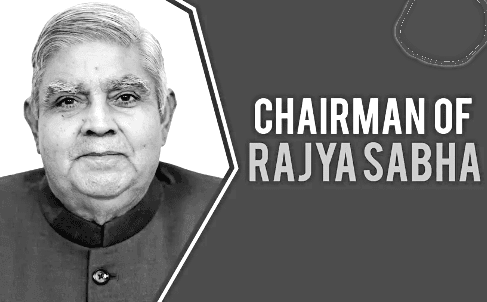 Qualifications for Election to the Position of the Vice President
Qualifications for Election to the Position of the Vice PresidentHe should be qualified for elections as a member of the Council of states.
Election Process for the Vice President
- The Vice President is chosen by the members of the Electoral College, which includes members from both Houses of Parliament.
- The election follows the system of proportionate representation through a single transferable vote.
- Voting for the Vice President is conducted by secret ballot.
Term of Office for the Vice President
- The Vice President serves a term of five years.
- Resignation can be submitted to the President in writing.
- Impeachment is the process for removal due to constitutional violations.
Responsibilities and Powers
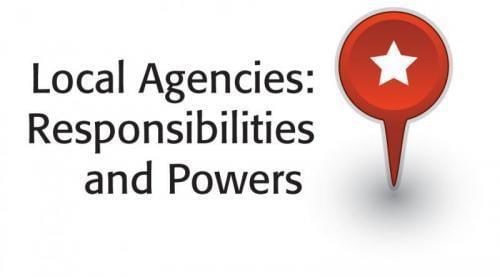
- Chairman of the Rajya Sabha: The Vice President serves as the ex-officio Chairman of the Rajya Sabha, the upper house of Parliament.
- Regulation of Proceedings: The Vice President is responsible for regulating debates and proceedings in the Rajya Sabha.
- Handling Disorder: In cases of grave disorder, the Vice President has the authority to suspend or adjourn the business of the House.
- Succession to the Presidency: The Vice President can assume the role of President in the following situations:
- Death of the President: If the President passes away.
- Resignation of the President: If the President resigns from office.
- Impeachment of the President: If the President is impeached.
- Temporary Absence: If the President is unable to perform duties due to absence, illness, or other reasons.
- Acting President: In cases of impeachment or death of the President, the Vice President acts as President until a new President is elected.
|
30 videos|197 docs|28 tests
|
FAQs on Revision Notes: The President and the Vice-President - History and Civics Class 10 ICSE
| 1. What are the qualifications required to be elected as President of India? |  |
| 2. How is the President of India elected? |  |
| 3. What are the executive powers of the President? |  |
| 4. What legislative powers does the President possess? |  |
| 5. What happens during an emergency caused by the breakdown of constitutional machinery? |  |















